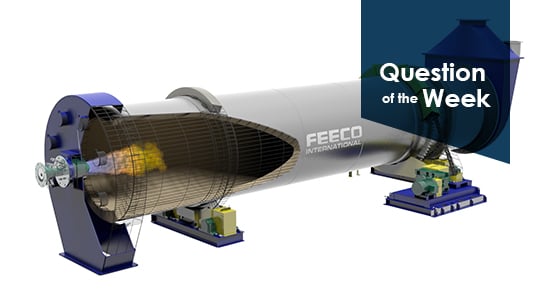Reduction roasting is the removal of oxygen from a component of an ore, usually through the use of Carbon Monoxide (CO). The CO is typically supplied by mixing a carbonaceous material such as coke or coal with the ore, or by feeding it separately.
An example is the reduction roasting of a hematite containing material to produce magnetite that can be magnetically separated. A second example comes from the Waelz process, where zinc oxide in steel mill waste is reduced to a metallic zinc and volatilized for recovery in the off-gas system.
In addition to reduction roasting, rotary kilns are also capable of carrying out a variety of processes including calcination, organic combustion, heat setting, sintering, and thermal desorption.
To learn more about rotary kilns, download FEECO’s rotary kiln e-book for a wide variety of content, or contact us today!


